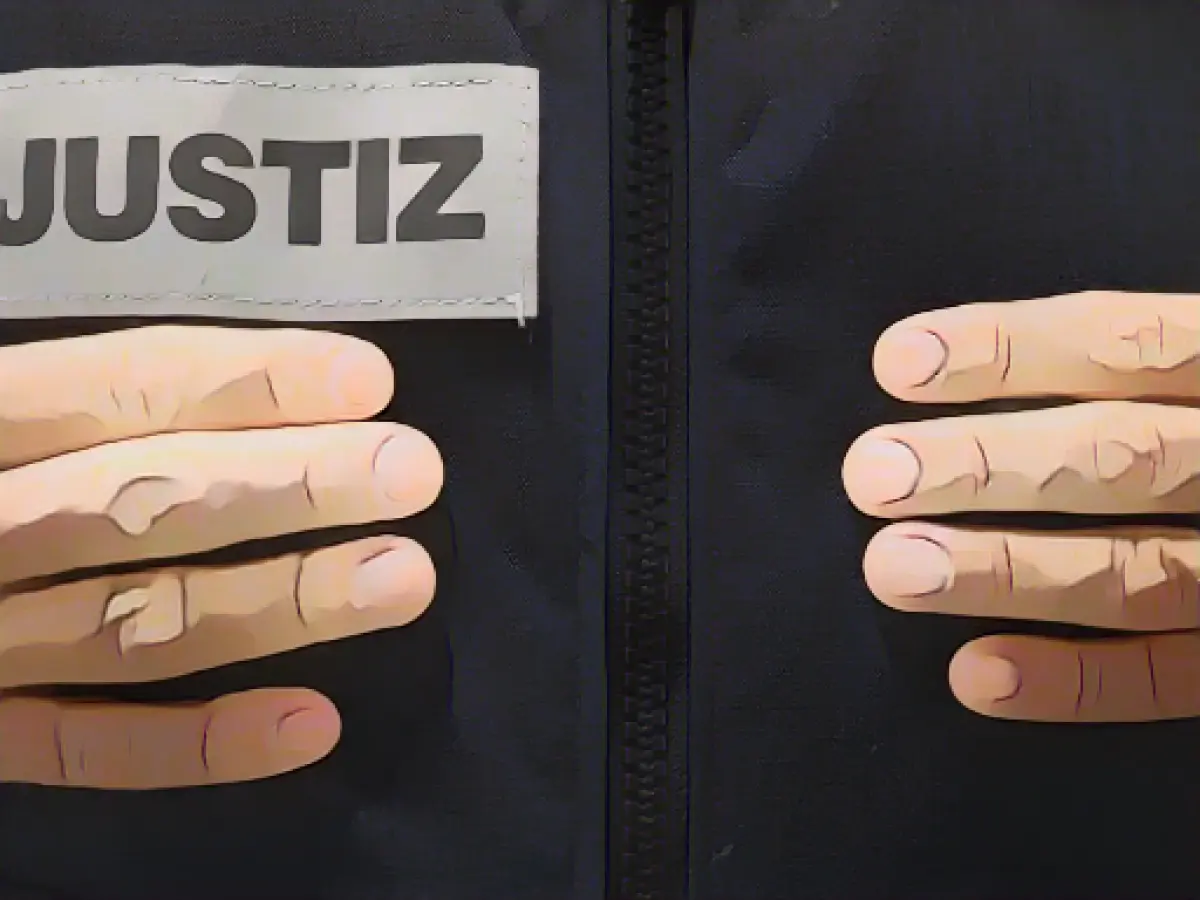Title: Robbery Trial in Lübeck: Tight Security and Phone Data Challenges
The ongoing trial for a significant cash-in-transit robbery at a large bakery in Lübeck faced intriguing twists on Friday, occurring under enhanced security precautions at the district court. The courtroom was safeguarded by twelve officers, securing the four male defendants from any potential altercations among themselves.
One of the previous trial sessions had witnessed a chilling threat from one defendant to another, fueling tensions within the courtroom. The accused are currently facing aggravated robbery charges.
During this session, a 63-year-old seasoned detective who analyzed the defendants' phone data presented difficulties in tracing specific devices to individual subjects. He explained that in certain instances, devices had seemingly been transferred to other individuals, which in turn added complexity to the investigation. However, his briefing ended by stating, “I'm merely responsible for data collection. I don't know what conclusions investigators drew from this.”
Unfortunately, over half of the scheduled witnesses either fell ill or decided against testifying to avoid self-incrimination during this sixth trial day. According to the presiding judge, one of these reluctant witnesses, a man who had lent a vehicle to one defendant to Poland shortly after the robbery, might face allegations of complicity. Consequently, he had the legal right to avoid testifying.
The trial proceeds with at least two more trial dates planned, according to the court officials.
The taut courtroom security measures were aimed at avoiding any criminal machinations emerging from potential disputes between the defendants. Meanwhile, the detective's phone data investigation faced challenges in assigning devices to specific individuals, creating potential complications for the investigation.
The Role of Phone Data in Robbery Investigations
Investigators can leverage the analysis of phone data to support their investigations of robberies in several ways:
- Tracing device use: Examining call data records and cell site analysis can lead to an approximate location of the device at a particular point in time, helping establish a timeline and possibly assisting in pinpointing the robbery site.
- Investigating device handoff: If multiple parties use the same device, tracking its movement can provide information about potential device handoffs and help reconstruct the sequence of events.
- Revealing communication patterns: Analyzing call and text logs can reveal patterns of communication between suspects, potentially uncovering additional accomplices or unveiling the mastermind behind the crime.
- Data recovery: Advanced mobile forensics techniques can recover deleted or encrypted data from devices, further substantiating the evidence collected.
- Accessing cloud storage: If the device connects to cloud services, investigators can examine data stored there, including login histories and communication patterns, to gather additional evidence.
- Real-time monitoring: Real-time device monitoring can unearth suspicious activities, equipped with the ability to adapt to cases in which multiple parties use the same device.
- Legal compliance: Conducting all data collection and analysis with appropriate authorization and consent is critical to avoiding privacy law violations and ensuring admissible evidence in court.
- Maintaining the chain of custody: Ensuring the integrity of digital evidence throughout the investigation is essential to upholding its admissibility in court.
By capitalizing on these tools and techniques, investigators can accumulate a more substantial body of evidence, rebuild the sequence of events, and construct a more robust case against suspected robbers. Nevertheless, navigating the intricate legal landscape and maintaining ethical practices are fundamental to success.








